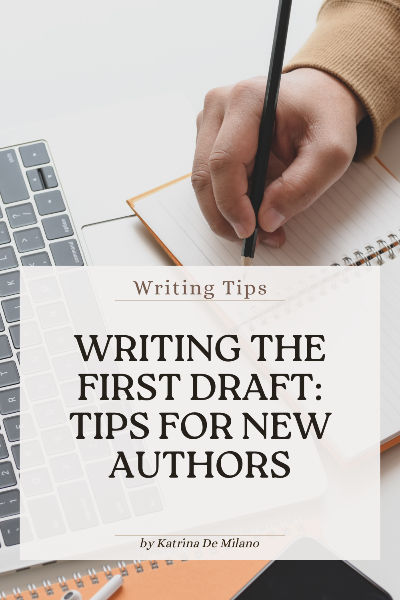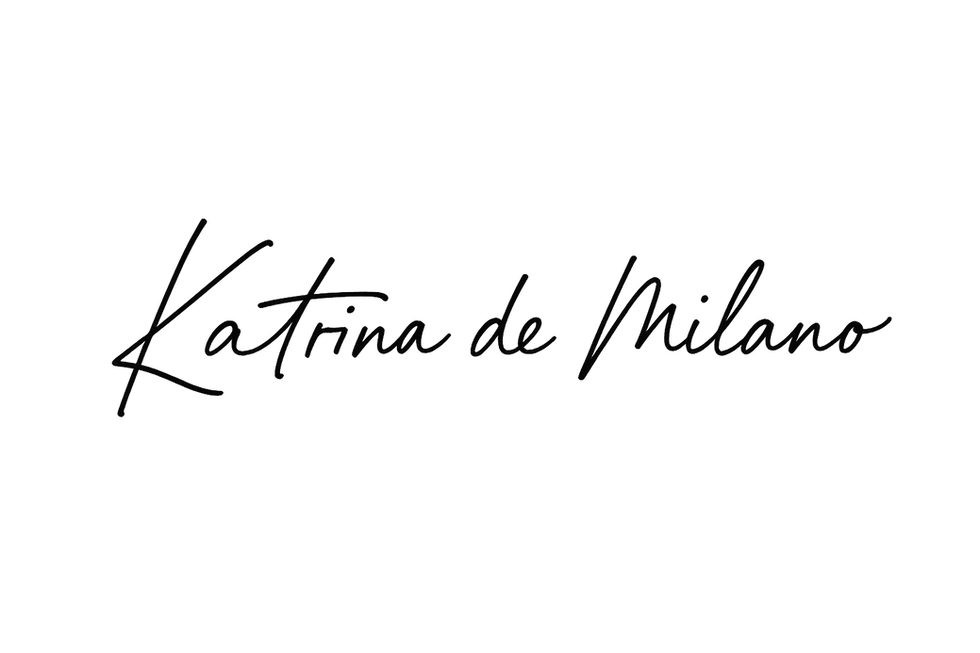✍️ How to Write Your First Draft
- Katrina De Milano

- 14 июн.
- 4 мин. чтения
Don’t aim for perfect. Aim for real, honest, messy progress — the kind that gets the story out of your head and onto the page.
There’s a moment every writer encounters — whether it’s your first novel or your fifth — when the idea feels vivid and alive in your mind.
You’ve dreamed the characters into being. You’ve seen glimpses of key scenes like flashes of lightning. Maybe a sentence or two already echoes in your head.
But then comes the hard part.
You sit down to write. You open the document.
And there it is — the blinking cursor on a blank page, waiting for you to begin.
And suddenly, all that momentum turns into fear.
What if I mess it up? What if the words on the page don’t match the vision in my head? What if I never finish this thing at all?
That’s the moment where many writers freeze.
But here’s what you need to hear — and believe:
You don’t have to write a great first draft. You just have to write one.
Because first drafts aren’t supposed to be flawless.
They’re supposed to exist.
🧪 First Drafts Are Experiments — Not End Results
If a finished book is a polished sculpture, then your first draft is the raw, unshaped clay. It’s the part where you discover what your story actually is — not just what you hoped it might be.
This is the phase where things are allowed to get weird, contradictory, and a little bit broken.
Where your characters may not behave, your plot might fall apart, and your dialogue might sound stilted. And that’s not a failure. That’s the process.
A first draft is:
You getting to know your characters from the inside out
You figuring out what your story really wants to say
You writing badly, bravely, and from the truest part of yourself
💡 Perfectionism kills creativity. Permission to be messy sets it free.
The only way to find the shape of the story is to let it pour out in whatever form it needs — unpolished, unfiltered, and deeply human.
🔁 Forget Editing — Your Job Is to Keep Going
This is not the moment to revise Chapter One again.
It’s not the time to obsess over whether that metaphor is working or whether your pacing is perfect.
This is the time to move forward — scene by scene, breath by breath.
In your first draft, the single most important skill is momentum.
Not elegance. Not polish. Not precision.
Just the raw, determined act of not stopping.
Try this mindset:
Write fast, knowing it will be ugly
Embrace placeholders and awkward lines
Leave gaps if needed — [Insert transition here] is a perfectly valid sentence
🧠 You can’t edit nothing. But you can shape anything — once it’s on the page.
🕒 Build a Rhythm That Works for You
You don’t need a strict writing routine. You don’t need to write 2,000 words a day or wake up at 5 a.m. (unless you want to).
What you need is rhythm — the kind that helps your story keep breathing, even when life gets noisy or your confidence wavers.
Try:
Writing in 25-minute focused bursts (Pomodoro technique)
Setting small, manageable goals: 300 words, one page, one emotional beat
Tracking your progress in a notebook or calendar
Celebrating every win — even a single paragraph counts
🔥 Tiny victories are how books get written.
🧩 When You Get Stuck — Shift, Don’t Stop
Every writer hits walls. The secret is learning to move around them, not letting them become a dead end.
If the scene you're in feels heavy or blocked, give yourself permission to pivot:
Skip ahead to a scene you're excited to write
Let a character write a raw, unfiltered journal entry
Write the dialogue only, like a screenplay — emotion first, structure later
Change locations. Switch tools. Try writing by hand or dictating out loud
✍️ The goal is not to control every word — it’s to stay curious long enough to find the next one.
🎯 The First Draft Isn’t Final — It’s the Foundation
So many writers get discouraged because their first draft doesn’t feel “good.”
But the first draft isn’t meant to be good — it’s meant to be true.
It’s where you:
Learn what your story is really about
Make beautiful, chaotic mistakes
Feel your way into the voice, the pace, the emotional center
Get to the end, knowing that the real shaping begins later
Finishing a messy draft is one of the bravest things you can do as a writer — and it’s the step most people never take.
📌 Don’t wait for clarity before you begin. Begin — and let the clarity come later.
✅ Gentle Reminders How to Write Your First Draft
You are not behind. You’re in the middle of becoming.
It’s okay if your sentences are rough — they’ll get better with every pass.
You’re not failing when it’s hard — you’re growing.
The fact that you’re trying is already a victory.
The first draft isn’t where the story ends. It’s where it begins to become real.
💬 Your Turn
What’s the hardest part for you when writing a first draft?
Is it starting? Continuing? Not editing as you go?
Drop your thoughts, fears, or milestones in the comments.
Let’s remind each other — we don’t have to write perfectly.
We just have to write.
And that, truly, is enough.







Comments